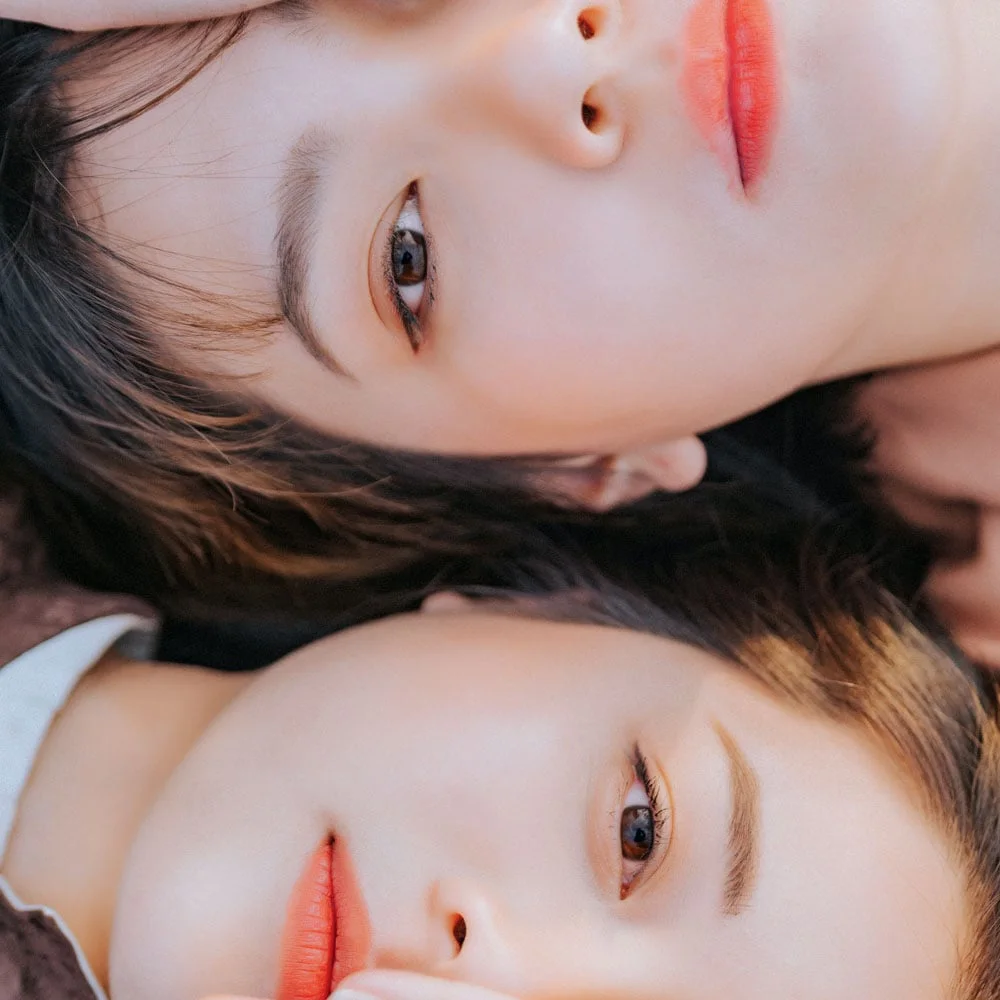Here's what we'll cover
Here's what we'll cover
You’ve probably seen the hype around Korean skincare if you’ve ever scanned the covers of beauty magazines while waiting to check out at the grocery store. A few years ago, these skincare products were only available through specialty websites, but now you’ll find products from Korean skincare brands on the shelves at most major retail stores.
Other than some unfamiliar ingredients (like snail mucin) and uncommon skincare scents (like banana), you may wonder how these products and a Korean skincare routine differ from what you’ve been doing (and what all the buzz is about).
What is Korean skincare?
The phrase “Korean skincare” refers both to skincare products developed and produced in South Korea and the routine of applying them. You may also see these products called “K-Beauty,” an umbrella term that includes Korean skincare, cosmetic, and bath products.
Korean skincare is typically more focused on preventing skin concerns than addressing them after they’ve already happened (Nguyen, 2020). It’s also spun off into other skincare trends, including:
Double cleansing: The process of using two cleansers in a row, specifically, an oil-based cleanser followed by a water-based cleanser
Glass skin: Skin with a clear complexion and even tone that’s well-hydrated so it appears almost translucent, like glass
Acid layering: Using multiple skincare products with exfoliating acids in them, but in a gentle way that isn’t irritating to the skin
10-step Korean skincare routine
The 10-step Korean skincare routine has made its rounds through popular media and Instagram, but this number isn’t set in stone. Korean skincare routines tend to include multiple steps. While a 10-step routine is common, you may see practices with more or fewer, and they’re no less legitimate.
The typical 10-step Korean skincare routine includes:
Oil-based cleanser: Cleansing oils remove oil-based products like makeup and SPF, as well as the natural oil produced by your skin called sebum. While water-based cleansers can effectively remove non-waterproof products, oil-based options may be more effective at removing products like waterproof sunscreen (Chen, 2019).
Water-based cleanser: This is the type of cleanser you probably already have in your bathroom. These foaming cleansers are effective at removing non-oily debris like sweat and dirt.
Exfoliant: Exfoliants can be chemical (AHA or BHA) or physical (scrubs), but all types remove dead skin cells to reveal younger, brighter layers of skin underneath. You need to start slowly with exfoliators since using too much or applying them too often can irritate your skin. You may also want to skip this part of the beauty routine if you have active breakouts.
Toner: Toners can serve multiple purposes, from balancing the skin’s pH to combating acne. Some toners help prepare your skin to absorb more skincare products that follow in the routine.
Essence: This skincare product is like a serum but thinner and less concentrated. Like serums, essences are formulated with active ingredients to address various skin concerns, from dullness to wrinkles.
Serum/treatment: After the essence, you’ll apply a thicker serum targeted to a specific skin concern like dullness, acne, or wrinkles. An ampoule (a more concentrated serum) can be used in this step as an intense short-term treatment.
Sheet mask: Sheet masks are made of a paper-like material soaked in a serum that you let sit on your skin for 15–20 minutes. Since sheet masks use serum, you can find them targeted to your skin concerns.
Eye treatment: Eye cream or gels are specially formulated to treat the thin, sensitive skin around the eye area. They can target under-eye circles, wrinkles, or puffiness.
Moisturizer: A moisturizer like lotion is used at the end of the skincare routine to prevent water loss from the skin. They may also reduce the look of fine lines and wrinkles and add to the “glass skin” look that has become popular with Korean skincare products (Nolan, 2012).
SPF: Daily sunscreen offers sun protection that can slow skin aging (Hughes, 2013). In some skincare routines, sunscreen is its own step, even if other products contain SPF.
Many of these skincare products are used in the morning and evening, but SPF is only one step in the morning. Although the Korean skincare routine order typically stays the same, this exact routine isn’t set in stone; people may use all ten steps in the morning but fewer in the evening, or vice versa. Some people do sheet masks several times a week instead of every day, and double-cleansing should be done only at night when there are more things to clear off your skin.
If you want to pare back on the Korean skincare steps above, just keep the general order. Cleansing comes first, and then products are applied from thinnest to thickest.
Do Korean skincare products work?
It’s too general to say that Korean skincare products work or don’t. Certain ingredients in Korean skincare products have proven benefits for specific skin types and concerns. Some effective ingredients used in K-Beauty products include:
Aloe: Moisturizers with aloe can help improve skin hydration and water retention (Umborowati, 2022).
Ceramides: Ceramides, which are used in moisturizers, can improve skin hydration and the function of the skin barrier (Spada, 2018).
Green tea: Green tea can be found in toners, emulsions, and even sunscreens, mainly due to its antioxidant properties and potential ability to protect against sun damage (Bhattacharya, 2020).
Hyaluronic acid: Hyaluronic acid, a natural substance in our eyes and joints, is used in Korean beauty products like serums, ampoules, and moisturizers. This ingredient can help with many skin issues, from wrinkles to dry skin (Bukhari, 2018).
Vitamin C: Topical formulations with vitamin C have anti-aging and brightening effects thanks to their antioxidant content (Rattanawiwatpong, 2020).
Korean skincare products can be a good choice for preventing skin issues if you find products with proven ingredients that can target your skin issues. Although some routines contain ten steps, you don’t need to adopt all of them to see the effects of adopting new high-quality skincare products. For active concerns like acne or signs of aging, it’s best to consult a skincare specialist for treatment.
DISCLAIMER
If you have any medical questions or concerns, please talk to your healthcare provider. The articles on Health Guide are underpinned by peer-reviewed research and information drawn from medical societies and governmental agencies. However, they are not a substitute for professional medical advice, diagnosis, or treatment.
Bhattacharya, S. & Sherje, A. P. (2020). Development of resveratrol and green tea sunscreen formulation for combined photoprotective and antioxidant properties. Journal of Drug Delivery Science and Technology , 60 , 102000. doi:10.1016/j.jddst.2020.102000. Retrieved from https://www.sciencedirect.com/science/article/abs/pii/S1773224720312892
Bukhari, S. N., Roswandi, N. L., Waqas, M., et al. (2018). Hyaluronic acid, a promising skin rejuvenating biomedicine: A review of recent updates and pre-clinical and clinical investigations on cosmetic and nutricosmetic effects. International Journal of Biological Macromolecules , 120 (B), 1682–1695. doi:10.1016/j.ijbiomac.2018.09.188. Retrieved from https://www.sciencedirect.com/science/article/abs/pii/S014181301833770X
Chen, W., He, M., Xie, L., et al. (2019). The optimal cleansing method for the removal of sunscreen:water, cleanser or cleansing oil? Journal of Cosmetic Dermatology , 19 (1), 180–184. doi:10.1111/jocd.12995. Retrieved from https://onlinelibrary.wiley.com/doi/abs/10.1111/jocd.12995
Hughes, M. C., Williams, G. M., Baker, P., et al. (2013). Sunscreen and prevention of skin aging. Annals of Internal Medicine , 158 (11), 781. doi:10.7326/0003-4819-158-11-201306040-00002. Retrieved from https://www.acpjournals.org/doi/abs/10.7326/0003-4819-158-11-201306040-00002
Nolan, K. & Marmur, E. (2012). Moisturizers: reality and the skin benefits. Dermatologic Therapy , 25 (3), 229–233. doi:10.1111/j.1529-8019.2012.01504.x. Retrieved from https://pubmed.ncbi.nlm.nih.gov/22913439/
Nguyen, J. K., Masub, N., & Jagdeo, J. (2020). Bioactive ingredients in Korean cosmeceuticals: trends and research evidence. Journal of Cosmetic Dermatology, 19 (7), 1555–1569. doi:10.1111/jocd.13344. Retrieved from https://pubmed.ncbi.nlm.nih.gov/32100931/
Rattanawiwatpong, P., Wanitphakdeedecha, R., Bumrungpert, A., et al. (2020). Anti-aging and brightening effects of a topical treatment containing vitamin C, vitamin E, and raspberry leaf cell culture extract: A split-face, randomized controlled trial. Journal of Cosmetic Dermatology , 19 (3), 671–676. doi:10.1111/jocd.13305. Retrieved from https://onlinelibrary.wiley.com/doi/full/10.1111/jocd.13305
Spada, F., Barnes, T. M., & Greive, K. A. (2018). Skin hydration is significantly increased by a cream formulated to mimic the skin's own natural moisturizing systems. Clinical, Cosmetic and Investigational Dermatology, 11 , 491–497. doi:10.2147/CCID.S177697. Retrieved from https://www.ncbi.nlm.nih.gov/pmc/articles/PMC6197824/
Tsakok, T., Woolf, R., Smith, C. H., et al. (2018). Atopic dermatitis: The skin barrier and beyond. British Journal of Dermatology , 180 (3), 464–474. doi:10.1111/bjd.16934. Retrieved from https://onlinelibrary.wiley.com/doi/abs/10.1111/bjd.16934
Umborowati, M. A., Anggraeni, S., Damayanti, et al. (2022). The beneficial effect of Aloe vera in skin barrier function improvement: a double-blind randomized trial of Madurese batik craftswomen. Journal of Pakistan Association of Dermatologists , 32 (1). Retrieved from http://jpad.com.pk/index.php/jpad/article/view/1828
Wood, D. (2016). K-beauty: The exhausting skin-care regimen that may be worth the effort. The Wall Street Journal . Retrieved from https://www.wsj.com/articles/k-beauty-the-exhausting-skin-care-regimen-that-may-be-worth-the-effort-1459970031










